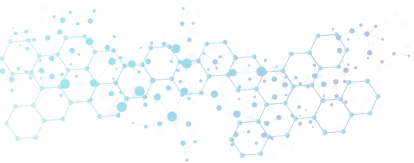Medical biological analyses
All information matters.
And every decision matters too.

Medical biological analyses
An essential step in your health journey
Dosages, follow-ups, check-ups… These analyses are used to confirm diagnosis, adjust treatment or simply check in.
They are a part of everyday life for many patients.
Every result matters: to make a decision, to prevent, to reassure.
We are committed to making them clear, reliable and quickly available.
In health, all information matters. And so does every deadline.
Our fieldsof medical analyses
Clinical chemistry
To understand the functioning of the body, marker by marker
Clinical chemistry enables to observe what the cells release in blood, urine or other biological fluids.
It is one of the key in order to detect a disorder, confirm a diagnosis or monitor the evolution of a pathology.
Certain substances indicate that an organ is functioning properly. Others reveal an imbalance, sometimes discreet, sometimes well-established.
But not all markers are receptive.
Certain disappear too fast while others cannot be precisely measured.
That is why analysis profiles are carefully chosen, depending on medical assumptions.
Our role is to:
- Identify biochemical disruptions linked to an organ or a system.
- Contribute to the diagnosis of metabolic, hepatic, renal or endocrine diseases.
- Monitor the impact of factors such as stress, nutrition or prolonged exposure to drugs.
Note
- Most of analyses are carried out in our laboratory in Geneva.
- Certain parameters require fasting or a specific preparation.
- The quality of the sample is essential to obtain an interpretable result.
Endocrinology
When hormonal imbalance disturbs the entire system
Endocrinology is a specialty of medical analyses that focuses on hormones, which are chemical substances produced by glands (thyroid, adrenal, hypophysis, pancreas, ovaries, testicles…) and play an essential role in the functioning of the human body.
Hormones are discreet but necessary. They regulate growth, energy, body temperature, menstrual cycle, sleep, fertility, mood… and much more.
Endocrinology examinations enable to measure the level of different hormones in blood, in order to evaluate the proper functioning of the hormonal system. A hormonal imbalance may have an impact on growth, metabolism, fertility, weight, mood, or even heart rate.
These analyses are useful to make a diagnosis or monitor several pathologies, such as:
- Thyroid disorders (hyperthyroidism, hypothyroidism),
- Puberty or menopause hormonal imbalances,
- Fertility problems in men or women,
- Diabetes (especially through insulin dosage or glycated hemoglobin),
- Diseases of the adrenal glands or hypophysis.
Hormonal dosages are often sensitive to the time of sampling, menstrual cycle or certain medications. Therefore, the laboratory ensures that these analyses are carried out in specific conditions, in order to guarantee reliable and useful results for diagnosis.
These chemical signals act as messengers.
When they are properly synchronized, everything works.
However, when an imbalance shows up, effects can be felt: unexplained fatigue, variations in weight, mood, sleep or libido disorders, difficulty concentrating…
Note
- Many hormone tests require fasting or being taken at a precise time of the day.
- Certain dosages may be influenced by contraception or hormone therapy.
- Our teams will inform you of the conditions to be respected, depending on your situation.
Tumor markers
To keep an eye on what your body expresses, sometimes in silence
Cancer does not always manifest itself loudly.
Certain biological signals may appear long before visible symptoms.
Tumor markers are substances produced in abnormal quantities by certain cancer cells or by the organism in response to their presence.
Alone, they cannot be used for diagnosis, but they provide useful indications to:
- Monitor the evolution of a known cancerous disease,
- Evaluate treatment response,
- Guide a prevention or targeted screening approach.
These markers are influenced by many factors: the type of cancer, its stage, the general condition of the patient, but also lifestyle factors such as diet, stress or environmental expositions.
Therefore, they are part of a broader reading, always accompanied by careful medical monitoring.
Note
- These analyses are often prescribed in the context of a follow-up or precise suspicion.
- Certain markers are specific to a type of cancer while others are more general.
- Their interpretation requires rigor and is always based on a global clinical approach.
Drug dosage
For a better, safer and more effective treatment
Every body reacts differently to a treatment.
What works for someone may be inadequate, or even not tolerated, for someone else.
Drug dosage enables to measure the concentration of a medication in blood. This is an essential tool in order to adapt certain medications and guarantee their efficacy while limiting adverse effects.
Certain medicines must be maintained within a specific “therapeutical area”: a concentration that is too low can make them ineffective, while a dosage that is too high may be toxic. This is particularly true for epilepsy treatments, certain psychiatric illnesses, immunosuppressants (after a transplant), anticoagulants and powerful antibiotics.
The doctor prescribes these dosages in these situations:
- At the beginning of a treatment, to adjust dosage,
- In case of doubt about efficacy or side effects,
- During long-term treatments that require a regular monitoring,
- In some patients at risk (elderly, children, renal or hepatic insufficient patients…).
These analyses usually require a sampling at a specific hour depending on when the medication is taken (often just before the next dose, at “steady-state”).
Thanks to these dosages, the laboratory contributes to a safe therapeutic follow-up.
Many factors influence the efficacy of a treatment: genetic, diet, age, potential interactions, or even lifestyle.
That is why the right dosage does not replace medical follow-up but rather enhances it.
Note
- These analyses are often prescribed as part of a specific follow-up.
- Certain medications require sampling at a specific moment after administration.
- Step by step, our laboratory guides you to facilitate the procedure.
Immunology
To understand defense reactions... and when they go wrong
The immune system protects the organism.
It identifies what belongs to it, what does not, and triggers a response when needed.
However, sometimes, this response is disproportionate, misdirected or too persistent.
The immunological analyses help us to understand this better.
In particular, they are involved:
- In case of allergies (known or suspected), through specific tests, including on recombinant allergens.
- In the follow-up or diagnosis of autoimmune diseases, when the immune system attaks the body’s own tissues (such as lupus, rheumatoide arthritis).
- In certain chronic infections or complex inflammations.
Immunology enables to guide a diagnosis, confirm a suspicion, or pinpoint an unusual reaction.
Example of immunological analyses:
- Dosage of immunoglobulins (IgA, IgG, IgM, IgE): antibodies in blood,
- Testing for specific antibodies: antinuclear antibodies (ANA), anti-DNA, antithyroid, etc.,
- Infectious serology: detection of antibodies against viruses or bacteria (hepatitis, HIV, rubella…),
- Allergy check-up: dosage of total or specific IgE,
- Lymphocyte immunophenotyping: analysis of immune cells (i.e.: in the case of HIV follow-up).
Results are often complex and must be analyzed by a doctor, by taking into account the patient medical history.
A “positive” antibody result does not always indicate an active disease. Clinical context is essential.
Note
- Certain tests are targeted, others are exploratory.
- Interpretation highly depends on clinical context and medical history.
- Analysis may be useful even if there are no visible symptoms.
- Immunology also plays a key role in transplantation, vaccination and the fight against some cancers.
Infectious serology
To read the traces left by an infection over time
Serology detects an immune response to a virus, bacterium or parasite.
Where bacteriology identifies an agent in the process of being present, serology reveals what happenned or is happening, sometimes silently.
It is used to:
- Confirm a recent or an old infection,
- Evaluate the presence or absence of immunity,
- Contribute to the detection of emerging diseases, even in the absence of typical symptoms.
It is used to identify certain transmissible infections, to screen childhood diseases or to document a vaccine response.
It remains an essential tool in epidemiological monitoring, prevention and follow-up.
Note
- A serological result does not always indicate an active infection.
- The period between an exposition to a pathogen and the detection of antibodies may vary (between 6 days and 3 weeks).
- These analyses are particularly useful during pregnancy, epidemic or differential diagnosis context.
Hematology
To explore the major functions of blood, between oxygenation, defense and balance
Blood carries, defends, regulates.
It irrigates all tissues, participates to immunity and ensures fluidity of circulation.
It is composed of three main cell types:
- Red blood cells (erythrocytes), which deliver oxygen and participate to metabolism balance.
- White blood cells (leukocytes), which focus on immune defenses.
- Platelets (thrombocytes), which are involved in coagulation in case of injury or hemorrhage.
Hematology enables to evaluate the general state of a patient, but also identify anomalies related to infection, inflammation, deficiency or chronic disease (leukemia or lymphoma).
These analyses are often prescribed as first-line tests, because they provide a solid basis for guiding a diagnosis.
Note
- A fasting sample may be required depending on the parameters to be analyzed.
- Certain variations are normal depending on age, cycle or ongoing treatment.
- A complete reading of the clinical context is essential for interpretation.
Hemostasis
To maintain the balance between fluidity and coagulation
Hemostasis is defined as the mecanism that enables blood to circulate freely, while still being able to coagulate when needed.
It is a fragile balance. In one hand, too little coagulation increases the risk of hemorrhage.
On the other hand, too much coagulation increases the risk of thrombosis or embolism.
Hemostasis analyses are used to:
- Check the proper functioning of the coagulation system,
- Monitor an anticoagulant treatment,
- Identify hereditary or acquired disorders that affect coagulation,
- Prepare for a safe surgical procedure.
They are often prescribed in cases of unusual bleeding, frequent bruises, or as a preventive measure during surgery.
Note
- Certain analyses require a temporary treatment cessation (to be confirmed with the doctor).
- The sample must respect a strict protocole with regards to the timing of blood sampling in relation to drug administration.
- The sample must be carried out to the laboratory within 4 to 6 hours.
Bacteriology and mycology
Bacteriology: to detect infections caused by bacteria
Bacteriology is the part of microbiology that studies bacteria responsible for infections in humans. It identifies the bacteria present in a sample (urine, blood, throat, stools, wound, etc) and determines the most appropriate treatment.
It is prescribed to:
- Identify the cause of an infection (angina, urinary tract infection, abscess, etc.),
- Choose the most effective antibiotic (thanks to the antibiotic sensitivity testing),
- Avoid useless antibiotics,
- Monitor certain infections at risk (hospitalization, chronic diseases, etc.).
How does it work?
- A sample is taken: blood, urine, throat, pus, stools, or other, depending on the type of suspected infection.
- The sample is then cultured to ensure bacterial growth.
- Once bacteria have been identified, a test is carried out to determine which antibiotics are effective.
Results and interpretation:
Usually, results are available between 24 to 72 hours, depending on the type of analysis. A doctor must interpret them and adapt the treatment if necessary.
Note:
- Certain bacteria are naturally in our organism (gut microbiota, skin microbiota, etc.).
- The presence of a bacterium does not always indicate an infection: the clinical context is what counts.
Mycology
Medical mycology is the specialty that studies microscopic fungi (also known as yeasts or molds) responsible for fungal infections called mycoses. These analyses are used to identify the fungus in question and adapt treatment.
A doctor may ask for a mycological testing in cases of symptoms such as:
- Red patches or itchings on the skin, nails or scalp,
- Unusual loss or genital itchings,
- Persistent cough in vulnerable persons (respiratory mycosis).
These infections can affect:
- Skin, nails, hair (e.g. athlete’s foot, nail mycosis),
- Mucous membranes (e.g. vaginal mycosis, oral candidiasis),
- Respiratory tracts or blood, especially in immunocompromised persons.
How does it work?
- A sample is taken: the removing of a piece of skin or nail, swab, spit, or other depending on the concerned area.
- The sample is analyzed under the microscope and cultured to identify the fungus.
Sometimes, faster techniques are used, such as PCR.
Results may take a few days (time for fungi to grow in culture, which can take up to 3 weeks). The doctor will then prescribe an appropriate antifungal treatment (cream, pill, etc.).
Note
- Mycoses are not always serious, but they can come back if not treated.
- Good hygiene and complete treatment are essential to avoid relapses.
- Certain mycoses can spread while others cannot.
PCR/Molecular biology
To identify, measure, monitor more effectively
Molecular biology deeply transformed the way of detecting certain infections.
It can directly identify DNA or RNA of a virus, a bacterium or a parasite, with a far greater precision than classical methods (such as culture).
Thanks to the PCR (Polymerase Chain Reaction) technique, it is possible to:
- Confirm an infection, even at an early stage.
- Identify precisely the microorganism in question.
- Monitor its evolution, by measuring viral load for example.
This approach became major in the follow-up of chronic diseases such as hepatitis, or in the detection of transmissible infections such as STIs or respiratory infections.
PCR is also quicker, more reliable and sometimes, avoids long stages such as culture.
Note
- Certain PCR tests require a specific sampling (blood, saliva, urine, smear…).
- They cannot replace a consultation, but rather help to guide or confirm a diagnosis.
- Results often include a quantification that can be tracked over time.
Vitamin dosages
For a better, safer, more effective treatment
Every organism reacts differently to a treatment.
What works for someone may be inadequate, or even not tolerated for someone else.
Drug dosage measures the concentration of a medication in blood. This is an essential tool to adapt certain treatments and guarantee their efficacy while limiting adverse effects.
Certain medications should be maintained within a specific “therapeutical area”: a concentration that is too low can make them ineffective, while a dosage that is too high may be toxic. This is particularly true for epilepsy treatments, certain psychiatric illnesses, immunosuppressants (after a transplant), anticoagulants and powerful antibiotics.
The doctor prescribes these dosages in these situations:
- At the beginning of a treatment, to adjust dosage,
- In case of doubt about efficacy or side effects,
- During long-term treatments requiring a regular monitoring,
- In some patients at risk (elderly, children, renal or hepatic insufficient patients…).
These analyses usually require blood to be drawn at specific hours depending on when the medication is taken (often just before the next dose, at “steady-state”).
Thanks to these dosages, the laboratory contributes to a safe therapeutic follow-up.
Many factors influence the efficacy of a treatment: genetic, diet, age, potential interactions, or even lifestyle.
That is why the right dosage does not replace medical follow-up but rather enhances it.
Note
- These analyses are often prescribed as part of a specific follow-up.
- Certain medications require sampling at a specific moment after administration.
- Step by step, our laboratory guides you to facilitate the procedure.
Andrology and fertility
For a better, safer, more effective treatment
Every body reacts differently to treatment.
What works for someone may be inadequate, or even not tolerated, for someone else.
Drug dosage enables to measure the concentration of a medication in blood. This is an essential tool in order to adapt certain medications and guarantee their efficacy while limiting adverse effects.
Certain medications should be maintained within a specific “therapeutical area”: a concentration that is too low can make them ineffective, while a dosage that is too high may be toxic. This is particularly true for epilepsy treatments, certain psychiatric illnesses, immunosuppressants (after a transplant), anticoagulants and powerful antibiotics.
The doctor prescribes these dosages in these situations:
- At the beginning of a treatment, to adjust dosage,
- In case of doubt about efficacy or side effects,
- During long-term treatments requiring a regular monitoring,
- In some patients at risk (elderly, children, renal or hepatic insufficient patients…).
These analyses usually require blood to be drawn at specific hours depending on when the medication is taken (often just before the next dose, at “steady-state”).
Thanks to these dosages, the laboratory contributes to a safe therapeutic follow-up.
Many factors influence the efficacy of a treatment: genetic, diet, age, potential interactions, or even lifestyle.
That is why the right dosage does not replace medical follow-up but rather enhances it.
Note
- These analyses are often prescribed as part of a specific follow-up.
- Certain medications require sampling at a specific moment after administration.
- Step by step, our laboratory guides you to facilitate the procedure.
Why choosing the laboratory MGD?
- More than 3,000 analyses are proposed
- 95 % of these analyses are realized on site, in Geneva
- 90 % of the results are available on the same day
- Easy access: with or without an appointment
- A team that listens, with a direct link with prescribing doctors
- Over 50 years of independant and Swissmedic-certified expertise
- Quality human relations at the heart of our activity

A simple preparation, a controlled process
1.
Prepare your analysis
Prescription, potential protocol, specific instructions: everything you need to know is specified in advance
2.
Find a center
With or without an appointment, depending on the type of test.
3.
Receive your results
Your doctor will directly receive your results. You can receive a copy of your results at your doctor’s request.
Our commitment, in full transparency
yearsof expertise
collectioncenters
of results within the day
of analyses on site

F.A.Q.
A doubt, a question? You are in the right place.
Do I need a prescription?
Yes, for classic medical analyses. If you have any question, do not hesitate to contact us.
May I come without an appointment?
Yes, except for some specific analyses. Check our dedicated page or contact us.
How will I receive my results?
They are directly sent to your doctor, and can also be sent to you if you want to.
Are my analyses covered by health insurance?
Yes, they are usually covered by basic health insurance when prescribed by a Swiss-based doctor.



